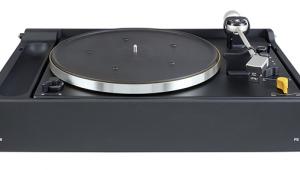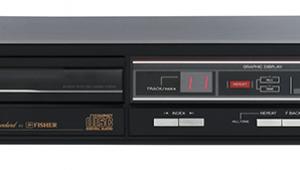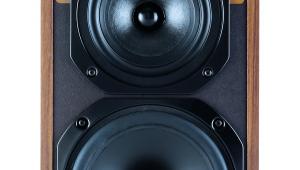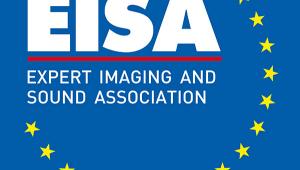Rogers Ravensbourne Stereo

 The late 1960s saw British brands move from tubes to transistors, and the Ravensbourne Stereo was the first such model to arrive from Rogers Developments (Electronics) Ltd
The late 1960s saw British brands move from tubes to transistors, and the Ravensbourne Stereo was the first such model to arrive from Rogers Developments (Electronics) Ltd
Arriving in 1967, the Ravensbourne Stereo was the first transistorised amplifier to be introduced by Rogers Developments, and slotted into the manufacturer's range between the existing HG88 integrated and Master pre/power models. At a time when the HG88 sold for around £46 and produced 15W in total from ECL86 tubes, the Ravensbourne was £64 and offered 25W per channel from modern silicon transistors.
This wasn't a great deal more money to spend to access the latest technology and a lot more power - even Rogers' Master pre/power combo, which was pricier at £90 for the pair, could only summon up a total of 35W. Outwardly little had changed, however. The HG88 had been recently updated to Mk III status and the same styling was used for the new and similarly sized Ravensbourne. From across a room the two models were difficult to tell apart.
Circuit Upgrade
What made this increase in power and performance possible was the availability of new types of transistor. Early Germanium designs were being ousted by silicon devices which offered better performance and were easier to design reliable circuits around. The best remembered of these was the 2N3055, a rugged component which, with care, could be made to form the basis of a high-quality amp rated at up to 60W per channel. The Quad 303 [HFN Jul '11], B&O Beolab 5000 [HFN Dec '13], Braun Regie 510 [HFN Jun '16] and Leak Stereo 30 Plus [HFN Sep '20] were all 2N3055-based designs. Add to these the Rogers Ravensbourne, which while less powerful than some of the above did include some interesting technical features.
Modern transistor amplifiers use complementary pairs of matched devices of opposite polarity (NPN and PNP). This allows, in conjunction with separate positive and negative supply rails, for the loudspeakers to be coupled directly to the output stage without transformers or capacitors in the way. This generally leads to better performance, especially at the bass end of the musical scale. Yet this method was normally not possible in 2N3055-based amplifiers, as there was initially no suitable complementary PNP transistor for the negative side. The Quad, Braun et al amplifiers therefore used a single supply and a blocking (AC-coupling) capacitor to connect to the loudspeakers.
No Problems
Rogers' Ravensbourne was the exception to this, as it employed two 2N3055s per channel connected across a split supply. The problems this caused were solved by transformer coupling the inputs to the two transistors, effectively making them two independent floating units as far as the rest of the circuitry was concerned. This gave Rogers the jump over many of its competitors, although the scheme was not without its difficulties.
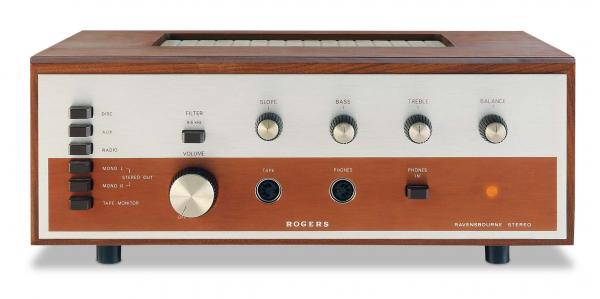
The first of these was that it introduced a transformer into the signal path where most designs did not need one. Transformers are among the most difficult components to design for good audio performance and in the end a degree of compromise is always needed between various conflicting factors. Operating the transformer at a low power level, as it is in the Ravensbourne circuit, means that a lot of these problems are less severe than they are if the transformer is instead used for loudspeaker coupling. It is still not a straightforward part to design, though.
Secondly, because the transformer breaks the DC signal path through the amplifier, it is no longer possible to apply servo feedback to stabilise the mid point voltage at the output to zero. Almost every other DC-coupled amplifier has the facility to null the DC output term, the electronics then taking over to hold the setting constant in the face of temperature changes, component ageing, etc. By contrast, the Ravensbourne circuit required that four preset adjustments were carefully made and then periodically checked to keep the amplifier working optimally.
Rogers was naturally impressed by its own invention, proclaiming in the Ravensbourne's promotional literature that the amp offered 'an exceptionally low level of intermodulation distortion, virtually perfect transient response and the complete absence of background noise' - see PM's Lab Report for his verdict.

Origin Story
Unlike the slightly later and lower-powered Ravensbrook [HFN Jan '16], which was produced in three distinct versions, the Ravensbourne was only sold in one series. An update was made in 1973 when the screw-terminal loudspeaker connectors were dropped in favour of conventional DIN sockets. At the same time the claimed power output was raised to 2x35W and the minor rotary knobs were finished in bright metal rather than matt brown plastic. In this form the model soldiered on until 1975 when, sadly, Rogers Developments went bankrupt.
But this was not the end for the Ravensbourne. New owners Swisstone revived the amp and continued to offer it in a refreshed range. The centrepiece of this line up was the Panthera A75, a much more up-to-date-looking integrated model which was suggested to be of 'professional quality'. The '75' part of the name referred to the power output, now up to a claimed 2x37.5W. Inside, however, the changes were minimal, including the now hopelessly outdated output stage topology that was also retained.
In this form an amplifier which started life in the late 1960s continued to be available well into the 1980s.

Our Ravensbourne comes from the other end of the model's life, having been assembled in the latter half of 1969. Setting it up is therefore not completely straightforward, although in some ways it is simpler than the later Ravensbrook. In particular, the chaotically wired DIN sockets of that model are not present here. There are the older type of RCA connectors, instead, which are still (just) compatible with modern cables.





